Part of a series of articles titled Park Paleontology News - Vol. 13, No. 2, Fall 2021.
Article
Dinos Large and Small, NNLs Got 'Em All

Leo Acosta and Heather Eggleston
NPS National Natural Landmarks Program
What do you call a dinosaur with an extensive vocabulary? A thesaurus!
What do you call it when a dinosaur gets in a car accident? A Tyrannosaurus wreck!
This old typewriter is such a dinosaur!
Don’t be such a sillysaurus!
Dinosaurs have stirred fascination in people for generations, as is reflected in their infiltration of so many aspects of human culture from cartoons, to jokes, to movies, to creative uses in the English language. And scientifically, there is much to be learned from studying dinosaurs, including insights into evolutionary theory and glimpses at ancient life and past environments.
In addition to scientific study, we are fortunate to have many places across America where the general public can see the remains of these ancient creatures and connect with worlds from long-ago. Along with the hundreds of sites managed by the National Park Service (NPS) that contain fossils, paleontological resources are found on lands owned and managed by other public agencies and private organizations and individuals. Further, there are Federal and state programs that highlight and acknowledge these important resources, including the National Natural Landmarks (NNL) Program.
Administered by the NPS, the NNL Program recognizes and supports the voluntary conservation of exemplary biological and geological sites that illustrate the Nation’s natural heritage, including those that contain significant paleo resources. National natural landmark sites are designated by the Secretary of the Interior and are owned by a variety of public and private stewards. To date, significant paleo resources have contributed, in whole or in part, to the designation of 59 national natural landmark sites across the country. While these landmarks represent the range of geologic history from very early marine life 510 million years ago to more recent (40,000 years ago) modern-day mammals, many sites are significant because of their role in conveying the dinosaur story, from 252 to 66 million years ago.
Of the “dinosaur” NNLs, nearly a quarter of them are found in and around the front range of the Rocky Mountains. These landmarks contain significant fossils that help tell the story of the three time periods of the Mesozoic Era: the Triassic, Jurassic, and Cretaceous.
The Ghost Ranch NNL, a privately-owned site in northern New Mexico, contains an extensive fossil record of the Triassic Period. The oldest of the Mesozoic periods, from ~252 to 201 million years ago (mya), the Triassic saw the rise of the earliest dinosaurs, including Coelophysis bauri. More than a thousand complete, or near complete skeletons of this reptile, one of the oldest and most primitive dinosaurs, were found at Ghost Ranch in the late 1940s, heralding what is considered by some paleontologists as the most important single fossil find in the American Triassic. The large number of this relatively small, meat-eating dinosaur discovered at Ghost Ranch help provide a complete picture of the anatomy of early dinosaurs as well as important insights into the variability within a species.
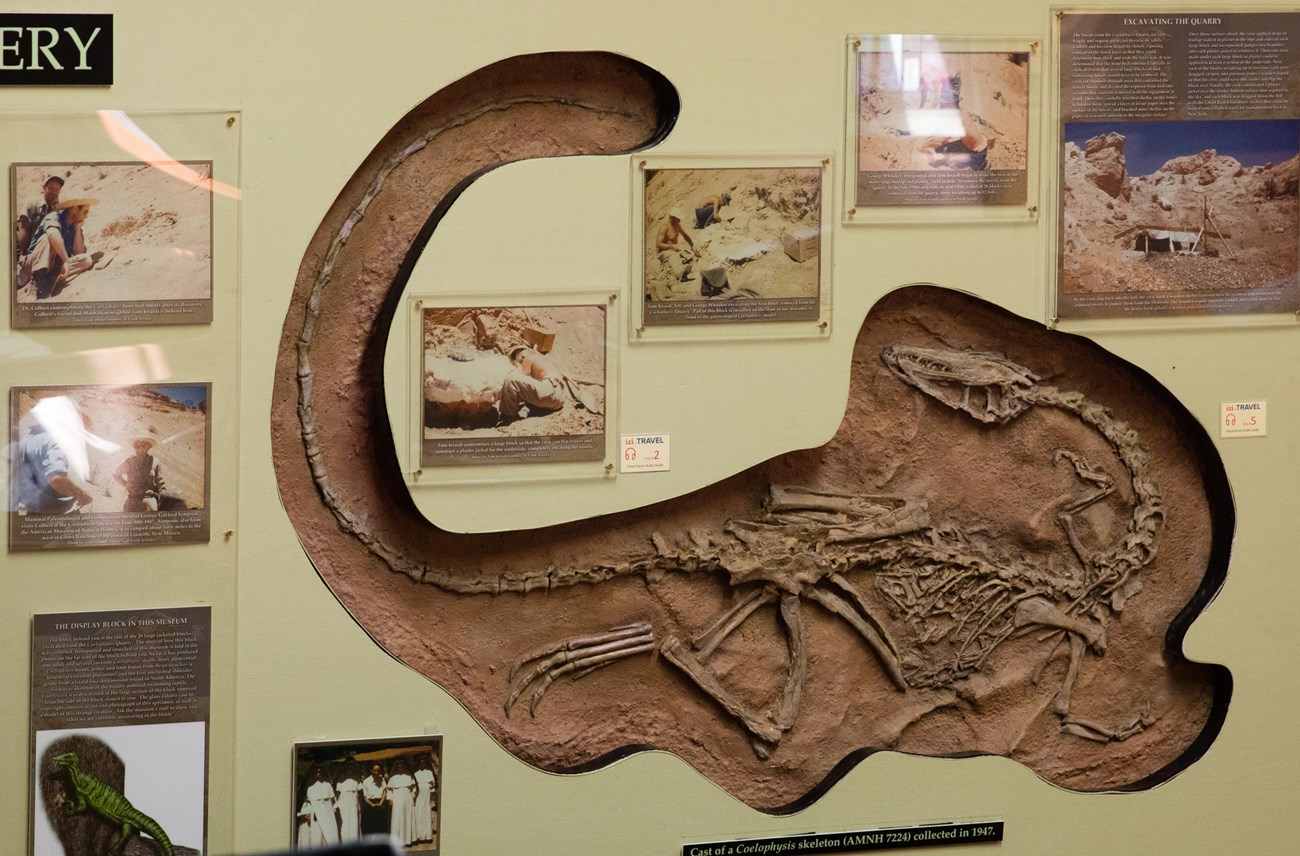
NPS photo.
Figure 1. Coelophysis on display at the Ruth Hall Museum of Paleontology at Ghost Ranch NNL, New Mexico.
NPS photo.
The Jurassic Period (from ~201 to 145 mya) is well represented at several NNLs in the Rocky Mountain region. The Cleveland–Lloyd Dinosaur Quarry NNL, managed by the Bureau of Land Management (BLM) in central Utah, contains the densest concentration of Jurassic-aged dinosaur bones ever found. Most of the individual dinosaur bones come from carnivores, primarily Allosaurus fragilis. This larger dinosaur was three times longer than Coelophysis, was also bipedal and meat-eating, probably eating other smaller dinosaurs.
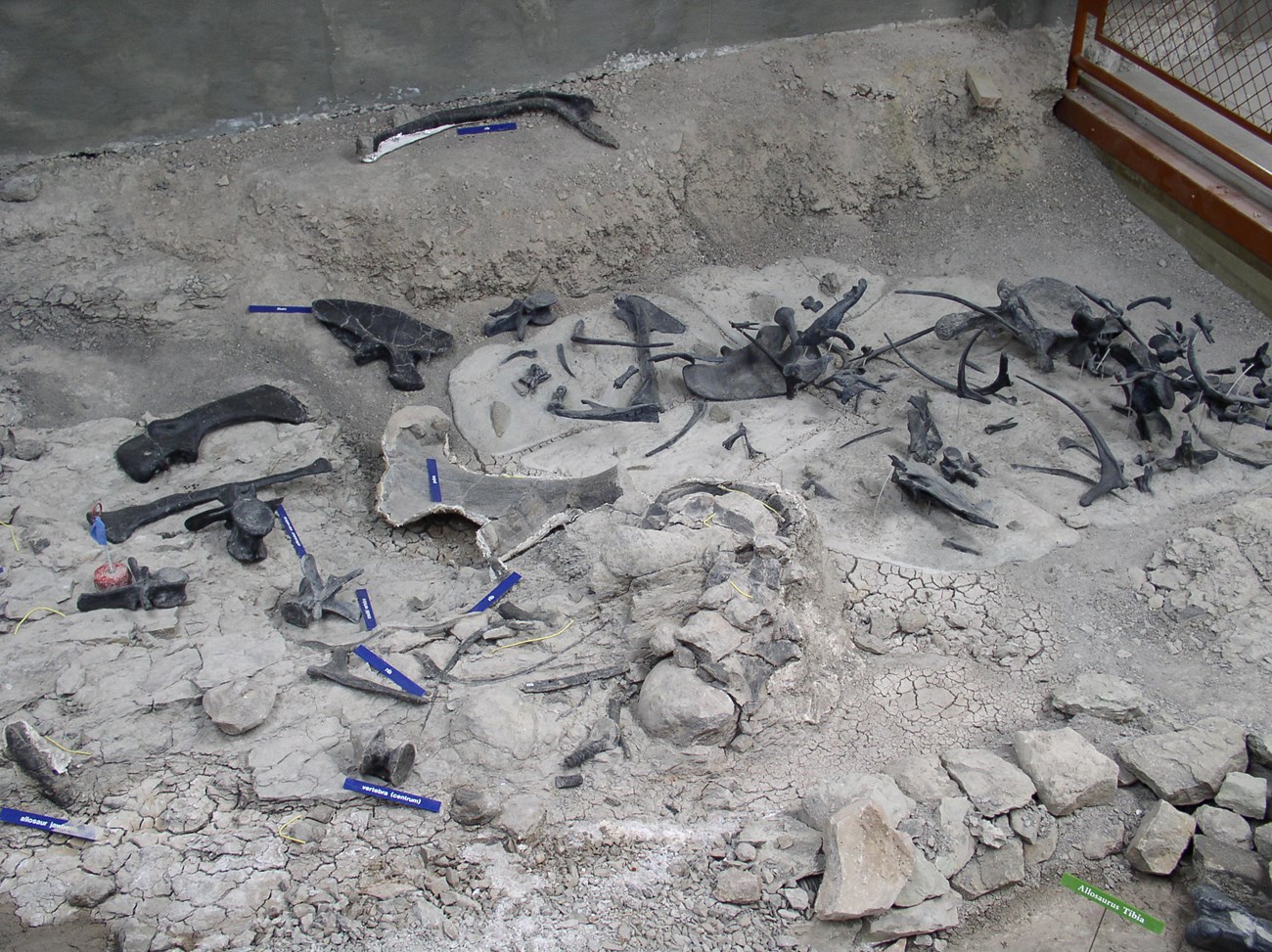
NPS photo.
The Garden Park Fossil Area NNL near Cañon City Colorado, also managed by the BLM, is recognized for the diversity of late Jurassic age fossils. Camarasaurus, Ceratosaurus, Diplodocus and the Colorado state fossil Stegosaurus have been found here as well as Jurassic flora. The diversity of fossils at this site allows researchers to better understand the ecology of the Jurassic.
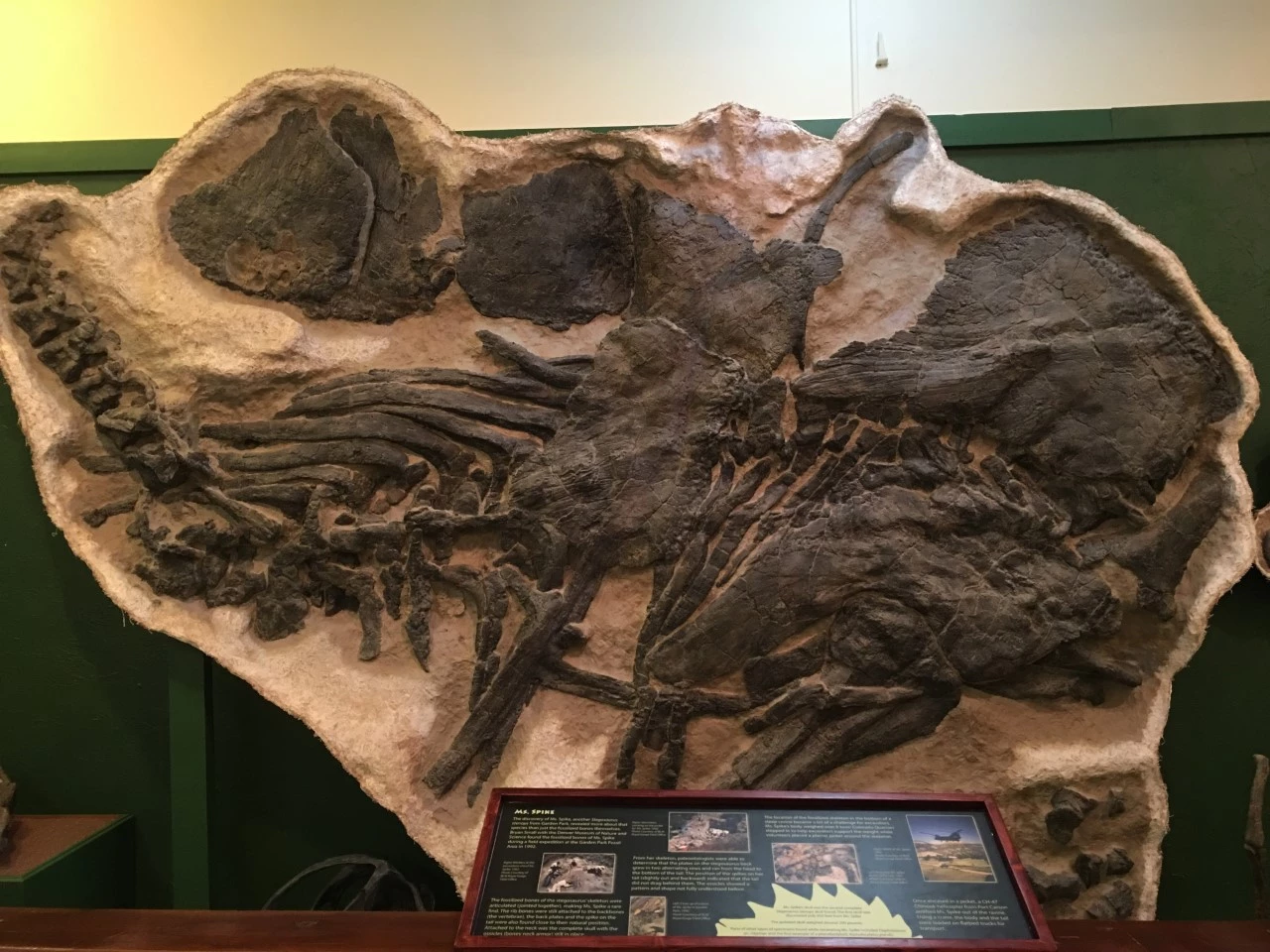
NPS photo.
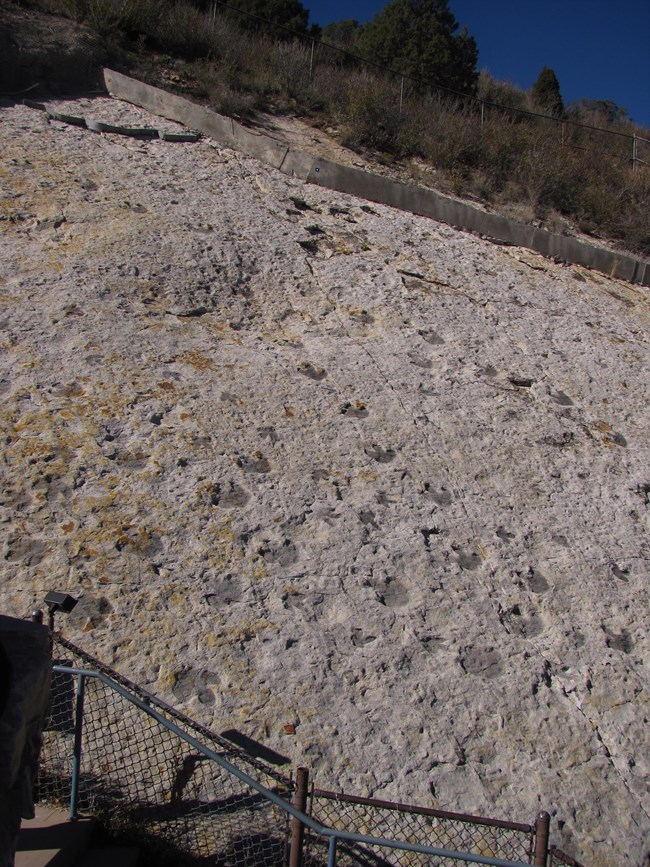
NPS photo.
The Morrison-Golden Fossil Areas NNL, just west of Denver, is a grouping of fossil sites that provide a connection to both the late Jurassic and Cretaceous Periods. At Dinosaur Ridge, the Jefferson County Parks and Recreation-owned portion of the landmark, Jurassic-aged dinosaur fossils are revealed in geologic features along an interpretive trail, along with dinosaur tracks from the Cretaceous Period (~145 to 66 mya). These visually spectacular trace fossils allow visitors to examine and imagine the size and movement of dinosaurs interacting with their environment.
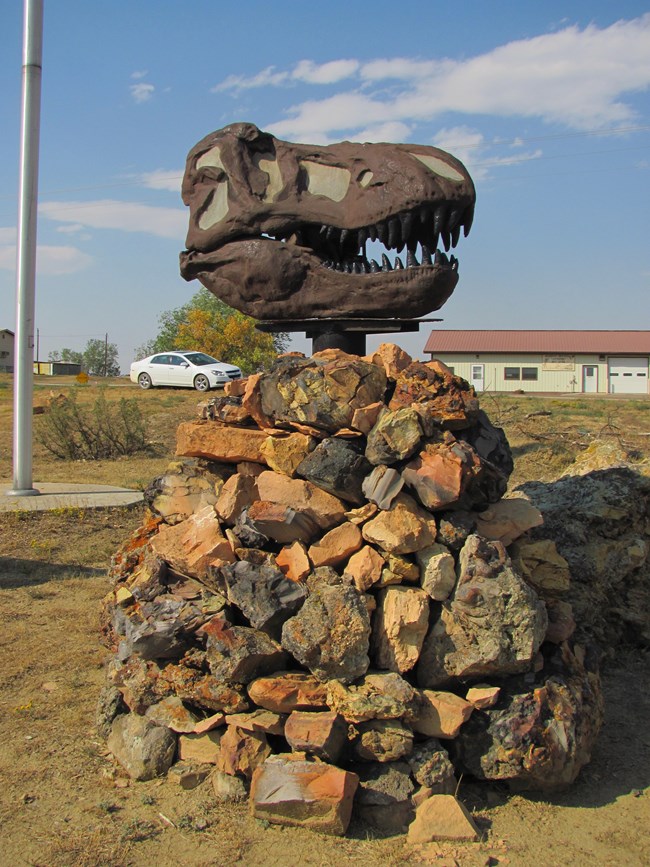
NPS photo.
The Cretaceous fossil record is also well represented at the state and Federally-managed (BLM and US Fish and Wildlife Service) Hell Creek Fossil Area NNL in northeast Montana, including fossils from one of the largest of the meat-eating dinosaurs. A number of Tyrannosaurus rex museum specimens are from the Hell Creek Fossil Area. This area has also provided quality specimens of Triceratops, as well as amphibian, reptile, fish, insect and plant fossils. This diversity gives a richer picture of the ecosystem as it neared the end of the Mesozoic Era and the time of the dinosaurs.
Additional information about the sites touched on here, as well as other Rocky Mountain “dino” NNLs, can be found in the three-part video series “Telling the Dinosaur Story.” Along with celebrating dinosaurs as part of this year’s National Fossil Day, we honor and celebrate the various public and private entities working diligently to steward all kinds of paleontological resources for science and public education. Their efforts ensure that the long-ago stories held by these ancient resources are preserved as part of the record of America’s natural heritage.
Last updated: March 10, 2022
